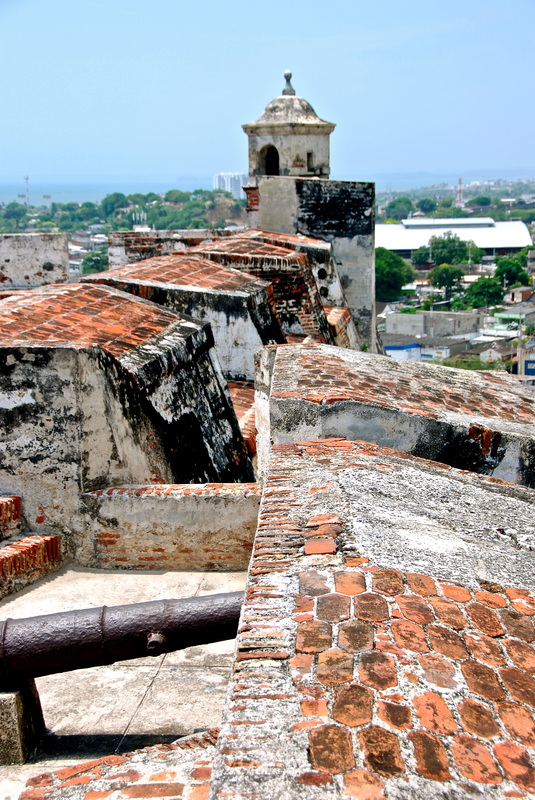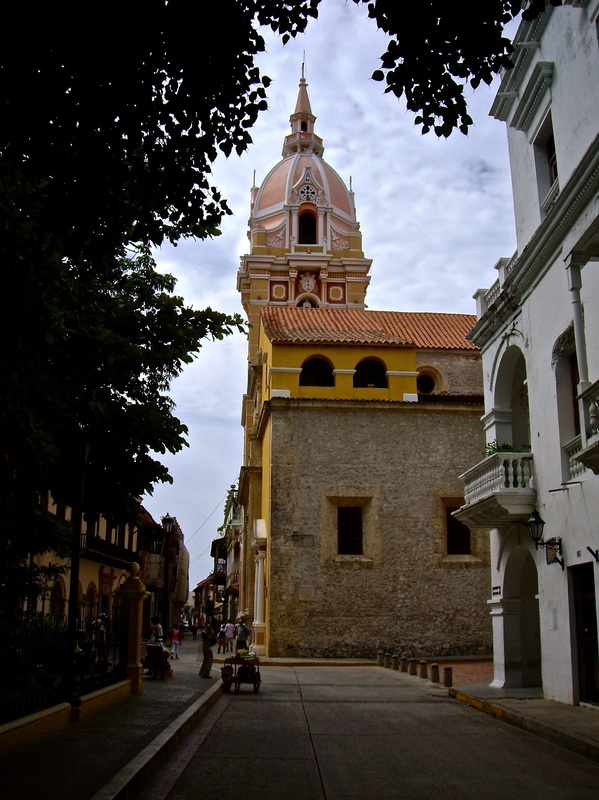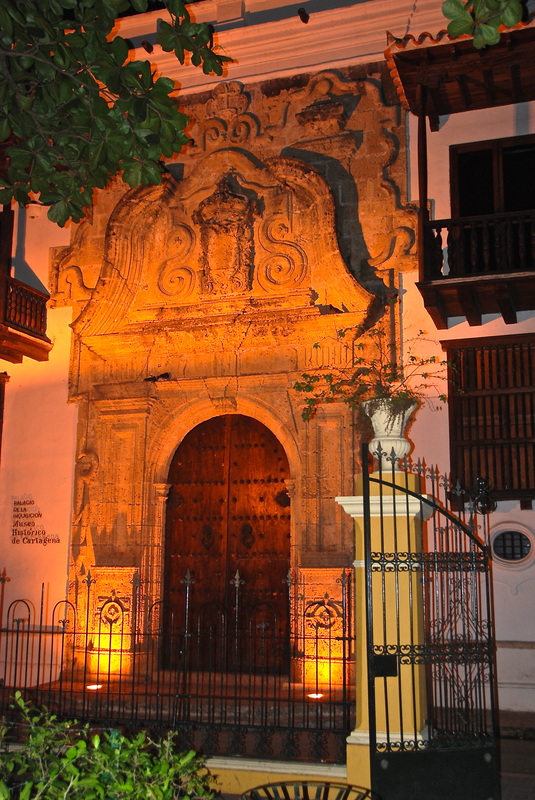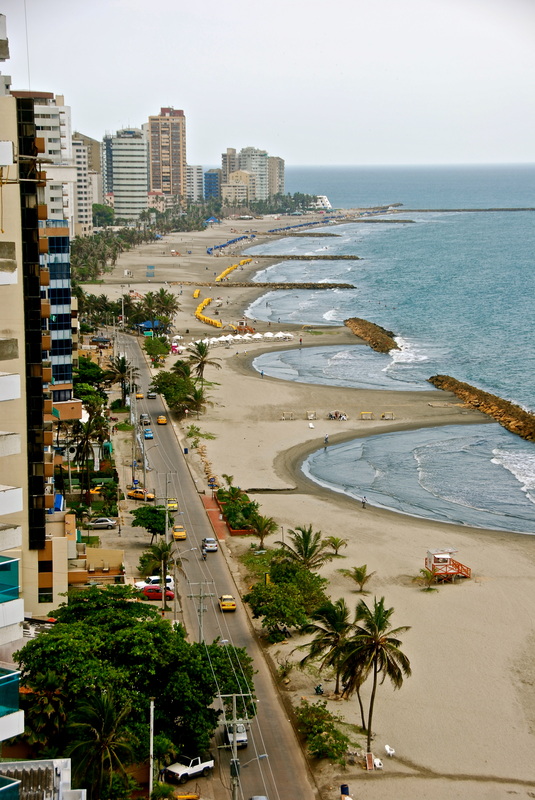6. Our Spanish Heritage
|
By Miguel Pérez
CARTAGENA, Colombia June 24, 2008 - Surrounded by a wall fortified by cannons and in the midst of fortresses and castles, there is no better place to appreciate Spanish influence in the New World than in this beautiful city by the Caribbean Sea. This is the place where U.S. Latinos come to recharge their ethnic batteries and to dig out the roots of their Spanish ancestry. There are places, such as Mexico's Chichen Itza and Peru's Machu Picchu, where we go to rediscover our pre-Hispanic heritage and to rekindle a sense of pride in our native Latin American lineage. But if there is a place to find pride in our Spanish heritage, this is it. Of course, you also can find it in St. Augustine, Fla., Old Havana, Old San Juan, Puerto Rico, Santo Domingo, Dominican Republic, and some of the other ancient port cities of Latin America. But nothing compares to Cartagena's "Ciudad Amurallada" (Walled City) and its remarkably preserved Spanish architecture and culture. Everywhere you go, you are reminded of the astonishing accomplishments of Spanish settlers, dating back to 1533, when Spanish Commander Pedro de Heredia founded this remarkable city on the northern coast of Colombia. In spite of the civil war that has bled this country for more than 40 years and in spite of the kidnapping and extortion risks American tourists take when they visit other parts of Colombia, Cartagena remains a relatively safe and very popular tourist destination, thanks to its great distance from the mountainous jungles where leftist guerrillas hide and keep hostages. This city of more than 1 million people, once the center of early Spanish exploration and settlement of South America, is still a major hub of commerce and tourism from all over the continent. Cartagena, designated a UNESCO World Heritage site in 1984, is a photographer's paradise. Everywhere you look, there is a beautiful picture waiting to be taken. Its full name is Cartagena de Indias, not to be mistaken with its namesake, the Mediterranean port city of Cartagena, in Spain's Murcia region. This Cartagena is also known as "The Heroic City" because of the many times it withstood attacks and plundering by French and British pirates and corsairs — including Roberto Baal, Martin Cote, John Hawkins and Sir Francis Drake — who raided the city in the 16th and 17th centuries. It was indeed the pillaging by pirates and thieves that made this city a fortified treasure. To repel the raids that ravaged Cartagena in its early years, the Spanish Crown ordered the construction of San Felipe Castle, which was named in honor of Spain's King Philip IV and built to resist land attacks. They also built 11 kilometers of fortified stone walls around the city and fortresses along the coastline. From the sentry boxes on the walls, one still can see the immense territory the Spanish soldiers had to protect from those who would loot the gold and precious stones found by Spaniards in South America. And from the durability of their construction and the underground tunnels designed to shuffle troops between fortress walls — which took more than 200 years to complete — one can appreciate the extraordinary ingenuity of the 17th-century European engineers. Of course, most of these fortifications were built by African slaves, casting a negative light on the Spanish accomplishments. But unlike the United States, where the work and contributions of slaves often are overlooked by American historians, in Latin America, while we recognized the accomplishments of the Spanish colonizers, we also note that their arrival marks the beginning of the holocaust of the natives and the opening of the gates to slavery. Indeed, one of the most prominent figures in Cartagena's history is St. Pedro Claver (1580-1654), a Spanish Jesuit monk, who became the patron saint of slaves and native South Americans. His remains are still visible in a glass urn on the main altar of a church that bears his name in one of the Walled City's most prominent squares. Cartagena was also one of three seats (with Lima, Peru, and Mexico City) of the Spanish Inquisition in the Americas. At the Palace of the Inquisition, now a museum, one can see the very cruel forms of torture employed by the Inquisitors against those accused of lacking religious faith, all of which came to an end in 1821, when South American liberator Simon Bolivar freed Cartagena from Spanish domination and expelled the Inquisitors. The cruelty of some Spanish settlers is on display here, but rightfully, so are their significant accomplishments. In Europe and the United States, historians always have chosen to cite only the negative side of Spanish settlers while purposefully playing down the atrocities committed by the French, Dutch and British against African slaves and Native Americans. But in Latin America, history recognizes that while the Spanish did a lot of horrible things, they also did a lot of wonderful things. In the first 100 years of Spanish presence in the New World, they built hundreds of cities and colonized half the hemisphere, including major portions of North America, as this column keeps pointing out in our occasional series on Latinos' contributions to the United States. This is a huge source of pride for Latinos who know their history — here in Cartagena and in the United States. COPYRIGHT 2008 CREATORS SYNDICATE INC. |
|









































